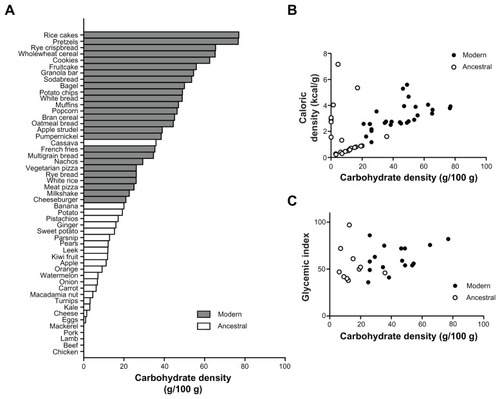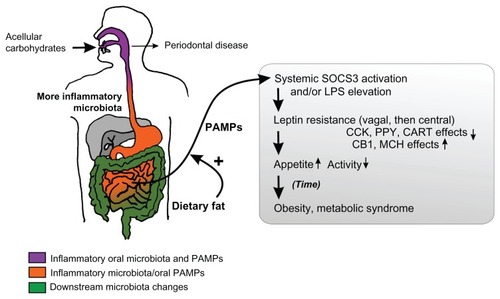Figures & data
Table 1 Nutrition transition overview: obesity and “Western foods”
Figure 1 The carbohydrate densities of ancestral foods are distinctly lower than those of the Westernized diet. (A) The carbohydrate density (excluding fiber) of a broad selection of foods, in descending order of carbohydrate density (data from USDA).Citation112 Modern foods (gray bars) are those that have undergone refinement or desiccation, or are derived from grains. “Ancestral” foods (white bars) are unprocessed whole-foods from the categories of meats, eggs, fish, nuts, fruits, tubers, and leafy vegetables. (B) Carbohydrate density and caloric density of modern and ancestral foods. Some ancestral foods have caloric densities as high as modern foods, notably meats and nuts. (C) Carbohydrate density and glycemic index of modern and ancestral foods. Once again, there is no distinction between the two categories of food, and no correlation between the density of a carbohydrate and the nature of the blood glucose response it will elicit.

Figure 2 Schematic of the hypothesis.
Abbreviations: CCK, cholecystokinin; PPY, peptide YY; CART, cocaine and amphetamine related transcript; CB1, cannabinoid receptor type 1; MCH, melanin concentrating hormone.
